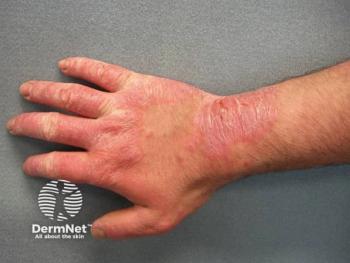
Addressing BSA Limitations and Evolving Patient Needs in Atopic Dermatitis
Walter Liszewski, MD, shares expert strategies for managing body surface area limitations in AD treatment using non-steroidal topicals, and explored key unmet needs in the current therapeutic landscape.
Episodes in this series

Walter Liszewski, MD, a dermatologist at Northwestern University, provided insights into the practical challenges of treating more severe cases of atopic dermatitis (AD) with topical therapies, especially non-steroidal agents. A key limitation discussed is body surface area (BSA) coverage. Many non-steroidals, such as ruxolitinib cream (Opzelura; Incyte), are only available in small volumes (e.g., 60g tubes), which makes treating widespread disease impractical. He noted a need for larger tube sizes, similar to what is available in Europe, to better accommodate patients with more extensive disease.
Liszewski emphasized the importance of strategic treatment—reserving high-potency non-steroidals for particularly symptomatic or visible areas, such as the neck, while using other options like tacrolimus or pimecrolimus on less affected regions. This approach helps balance efficacy with practical concerns about quantity and coverage.
When discussing unmet needs in the topical AD treatment landscape, Liszewski highlighted 2 primary areas: larger volume packaging and improved dosing convenience. Many patients prefer topicals over systemic therapies due to concerns about long-term safety, even when systemic options are safe and effective. Patients with longstanding AD are often accustomed to applying large volumes of topical steroids, making smaller prescription tubes frustrating.
He also pointed out the benefit of once-daily or every-other-day topical treatments, which could improve adherence and outcomes. Finally, Liszewski stressed the growing patient demand for more non-steroidal options, noting that, much like over-the-counter sunscreens, diversity in prescription topicals allows for better customization of care and reduces reliance on corticosteroids.
Newsletter
Like what you’re reading? Subscribe to Dermatology Times for weekly updates on therapies, innovations, and real-world practice tips.






















